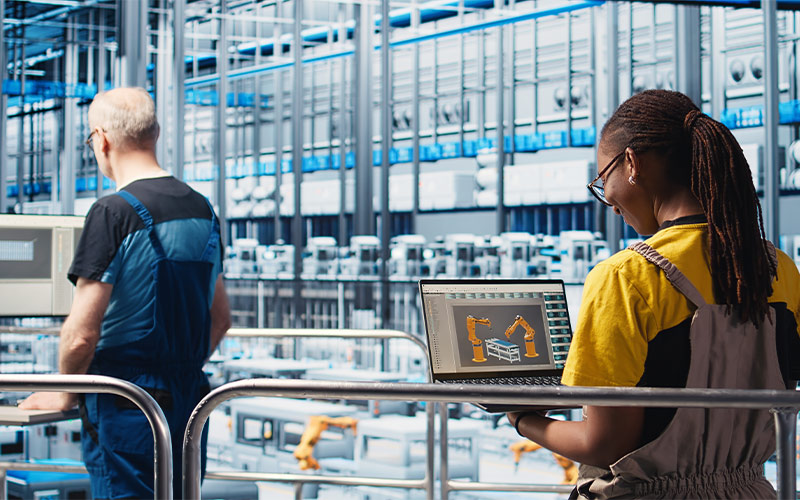
Balcony inspections are critical for ensuring the safety of residential properties, but the traditional process is often slow, manual, and prone to error. This leads many property managers, inspectors, and HOA boards to ask: How can AI be integrated into balcony inspection workflows to make them faster, more accurate, and more reliable?
The answer lies in combining AI technologies with existing inspection methods. Proper integration can transform how inspections are conducted, especially when managing SB326 report generation service and SB721 report generation service projects. With the right approach, AI not only simplifies the workload but also enhances the quality of the final reports.
Why Integrating AI Matters
Balcony inspections under SB326 and SB721 must meet strict safety standards and documentation requirements. Even small errors or delays can cause non-compliance, increased liability, and additional repair costs.
Integrating AI into workflows:
- Improves data accuracy
- Speeds up inspection and reporting
- Enhances defect detection
- Standardizes documentation across teams
Rather than replacing human inspectors, AI acts as a powerful assistant, streamlining tedious tasks and allowing professionals to focus on critical evaluations.
Step-by-Step Guide to Integrating AI into Balcony Inspection Workflows
1. Identify Inspection Workflow Bottlenecks
The first step in integrating AI is identifying which parts of the existing workflow slow down the process or introduce errors. Common bottlenecks include:
- Manual photo sorting and tagging
- Inconsistent damage assessment language
- Time-consuming report drafting
- Missed or overlooked defects
A clear understanding of these weak points allows for targeted AI implementation where it will have the most impact.
2. Choose AI-Enabled Tools and Platforms
AI technologies designed for building inspections offer features such as:
- Real-time data tagging
- Automated damage detection
- Predictive maintenance analysis
- Standardized report generation
When selecting tools, prioritize platforms that integrate smoothly with the inspection team’s existing devices and workflows. Services providing SB721 report generation service or SB326 report generation service often offer bundled AI solutions that include these capabilities.
3. Train the Inspection Team
Proper training ensures that the team understands:
- How to collect data using AI tools
- How to verify AI-flagged defects
- How to use AI-generated draft reports effectively
Training should focus on best practices for using AI as an assistant, not a replacement. Professional judgment remains essential for interpreting AI insights correctly.
4. Implement AI for On-Site Data Collection
Use AI-powered apps or devices during site visits to capture:
- Photos automatically tagged with defect types and locations
- Notes with standardized descriptions
- GPS coordinates for each inspected element
This approach streamlines the fieldwork stage, reducing manual transcription errors and ensuring that every detail is documented properly.
5. Use AI for Real-Time Defect Detection
AI-driven imaging tools, including drones and thermal scanners, help identify structural issues such as:
- Moisture intrusion
- Wood rot
- Cracks and corrosion
Integrating real-time defect detection into site inspections ensures that hidden problems are spotted early, even in hard-to-reach areas. For large properties undergoing SB326 report generation service, this can be a game changer.
6. Automate Report Drafting
After inspections, AI platforms can:
- Compile notes and images into draft reports
- Prioritize defects based on risk levels
- Suggest repair recommendations
Automated drafting speeds up the reporting process dramatically. Human inspectors simply review, adjust if necessary, and finalize the reports. Services offering SB721 report generation service often leverage this process to meet tight regulatory deadlines.
7. Integrate Cloud Collaboration Tools
Using cloud-based AI platforms enables seamless collaboration between inspectors, engineers, property managers, and repair contractors. Features include:
- Instant access to inspection data
- Real-time report edits
- Easy sharing of annotated images and risk assessments
This ensures that everyone involved stays updated and can act promptly on inspection findings.
8. Monitor Performance and Continuously Improve
After integrating AI, monitor key performance indicators such as:
- Inspection duration
- Defect detection rates
- Report accuracy
- Client satisfaction
Use insights from these metrics to fine-tune workflows, optimize AI tool usage, and continue training inspectors on emerging best practices.
Common Pitfalls to Avoid
- Overreliance on AI: Always pair AI insights with human verification.
- Skipping training: Without proper training, inspectors may misuse tools or misinterpret results.
- Ignoring integration compatibility: Choose tools that work smoothly with existing software and devices.
- Failing to update: Regularly update AI tools to benefit from improved defect recognition algorithms and features.
Real-World Example: AI Integration Success Story
In a 200-unit condominium inspection project, integrating drone imaging, automated defect detection, and AI-driven report drafting cut the overall project timeline by 40%. Early detection of minor defects through thermal imaging allowed preventive maintenance that saved the HOA tens of thousands of dollars in future repairs.
Working with an SB326 report generation service provider experienced in AI integration made a substantial difference in both compliance quality and project efficiency.
How AI Supports Long-Term Compliance
Beyond individual inspections, AI tools can:
- Track building element performance over time
- Predict maintenance needs based on inspection histories
- Help plan budgets for future repairs
- Facilitate smoother reinspection cycles
This makes AI integration not just a one-time upgrade but a foundation for sustainable building health management.
Final Thoughts
Integrating AI into balcony inspection workflows enhances speed, accuracy, and regulatory compliance while freeing inspectors to focus on the high-level analysis that technology cannot replace. The result is safer properties, faster reporting, and more confident compliance with SB326 and SB721 requirements.
Working with trusted experts offering AI-supported SB326 report generation service and SB721 report generation service ensures a smooth transition and maximizes the benefits of this powerful technology.
If any questions arise about how to integrate AI into balcony inspection workflows or choosing the right tools for SB326 and SB721 compliance, feel free to leave a comment below. A response will be provided as soon as possible to support your inspection success.
